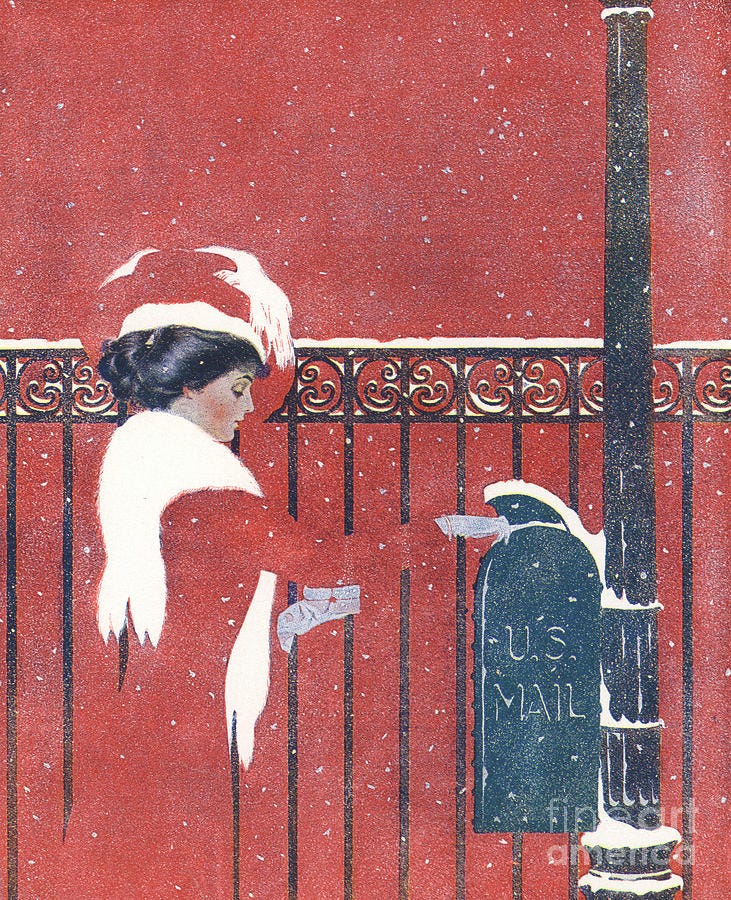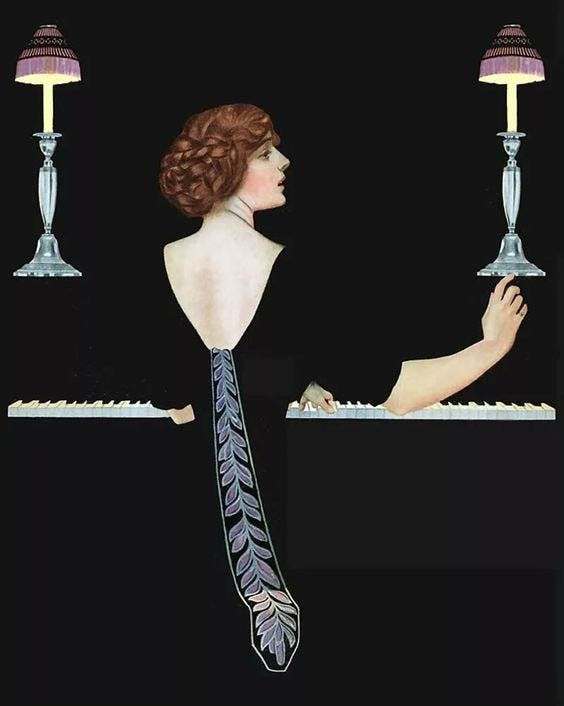This is the Rocketeer. This week I want to introduce you to a remarkable illustrator named, Cole Phillips. He’s been on my mind lately because I’m considering using his famous graphic art technique—the fadeaway— for a book cover. But, like many skilled things, what looks easy is often quite tricky to do. So while I twiddle my #2 yellow pencil in contemplation, I thought I’d bring you all into my thought process by talking a little bit about—the fadeway.
Coles Phillips was born in 1880. Between the years of World War I and the late 1920’s he was the first to introduce Art Deco styles into advertising design. A dynamic and highly skilled watercolor artist and draftsman, Phillips created dozens of covers for mainstream American magazines including the Saturday Evening Post, Life, Good Housekeeping, Colliers, Ladies’ Home Journal, and McCall’s.
Some social historians give Phillips credit for the very first pin-up girl, later known as "The Fadeaway Girl". His first cover of this type was in 1908 and it was so popular that the technique became his trademark. His approach produced an intriguing poster-like effect of great simplicity, yet it was based on the careful preliminary planning of shapes to carry out the illusion of the full figure. Phillips’ "Fadeaway Girl" cleverly links the background color to and through the girl’s dress. This gives the impression that she is lost to the background and tricks the mind into seeing her as close and far away simultaneously. Brilliant, really!
Phillips fadeaway technique has persisted as a gimmick to the present day. To create the effect, he studied the proportions of the canvas, the cover dimensions for its end-use, and the negative shapes of the design so that he could see whether the design worked equally well in both positive and negative shapes.
Phillips’ highly cerebral approach relied upon strong design, making it a treat for certain connoisseurs of the graphic arts. But it also had mass audience appeal. During the twenty-year period between 1907 and 1927, Cole Phillips was one of the most popular illustrators in the nation, ranking him alongside Maxfield Parrish and J.C. Leyendecker for popularity.
Beyond magazine covers, Phillips also illustrated many books, none of which I have ever seen, unfortunately. Several books about his fadeaway girls have also been published, including A Gallery of Girls and A Young Man’s Fancy.
Coles Phillips died in 1927 at 47 years of age in New Rochelle, New York. At that time, New Rochelle was a popular residential community for illustrators including J.C. Leyendecker and Norman Rockwell. The day Phillips died Leyendecker, his good friend and neighbor, took the four Phillips children into Manhattan to see the Charles Lindbergh Parade on Fifth Avenue.
Well, that’s certainly enough background information about Cole Phillips—now onto some images! These are but a few of many. You can find many more on Pinterest, Tumblr, etc.. Check him out if you get the chance. I find these fadeaway images quite compelling and also remarkably soothing somehow.
This is the Rocketeer signing off for today.















Cool. Great composition as well. Hadn't really been aware of it so much. Very stylish.
There's a comic book cover artist who takes that idea even further to mostly blend the figures. John Tyler Christopher. Not as much contrast as Cole.
Then there's Robert Downey Jr in Sherlock Holmes. The second one, Game of Shadows I believe. Watched it not too long ago actually...